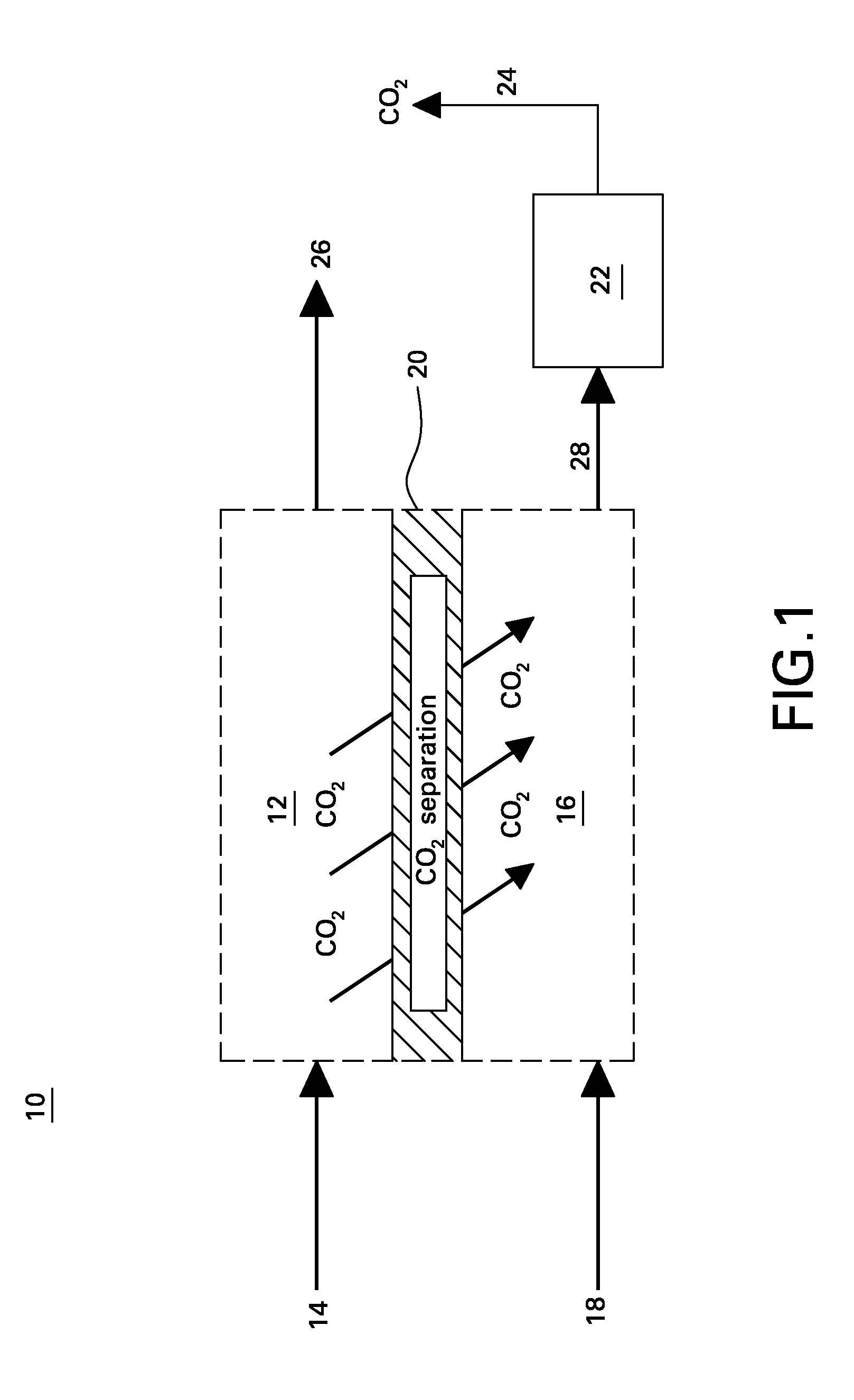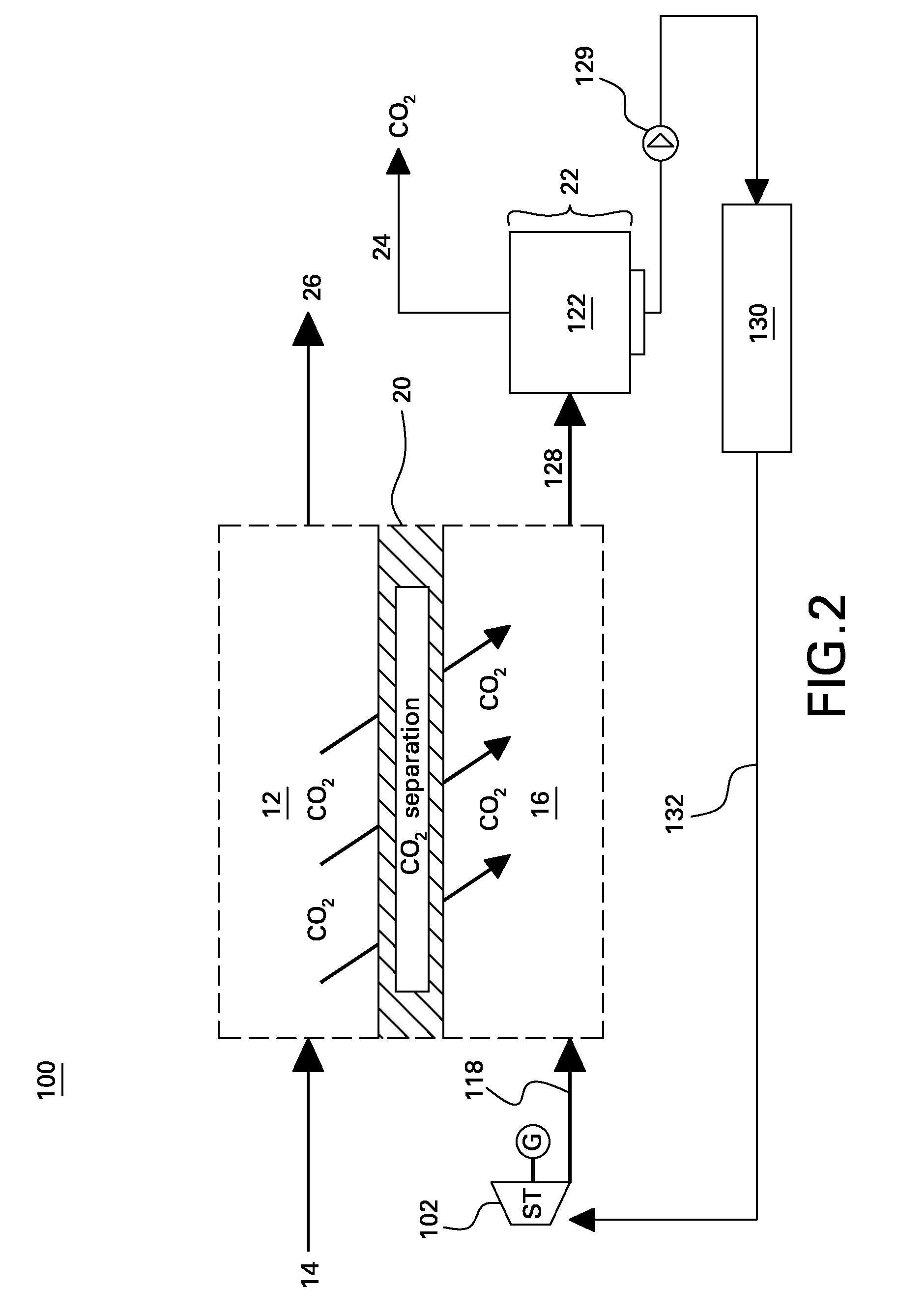Carbon dioxide capture systems and methods
a carbon dioxide and carbon dioxide technology, applied in the field of carbon dioxide capture, can solve the problems of not being cost-effective when considered, the cost of cosub>2 /sub>capture using current technology, can be as high as $150 per ton, and is generally estimated to represent three-fourths of the total cos
- Summary
- Abstract
- Description
- Claims
- Application Information
AI Technical Summary
Problems solved by technology
Method used
Image
Examples
Embodiment Construction
[0016]A carbon dioxide separation system 10 comprises a first flow path 12 for directing a fluid comprising carbon dioxide 14 therethrough and a second flow path 16 for directing a sweep fluid 18 therethrough, and a separator 20, for example a membrane, for separating the first and second flow paths (12, 16) and for promoting carbon dioxide transport therebetween (along the path of the arrows), as shown in FIG. 1.
[0017]In one embodiment, separator 20 comprises a material or structure that enables selective permeability of carbon dioxide. Any suitable material may be used for the separator 20 provided that that material is stable at the operating conditions and has the required permeance and selectivity at those conditions. Materials known to be selective for CO2 include, for example, certain inorganic and polymer materials. Inorganic materials include microporous alumina, microporous carbon, microporous silica, microporous perovskite, zeolite and hydrotalcite materials.
[0018]While n...
PUM
 Login to View More
Login to View More Abstract
Description
Claims
Application Information
 Login to View More
Login to View More - R&D
- Intellectual Property
- Life Sciences
- Materials
- Tech Scout
- Unparalleled Data Quality
- Higher Quality Content
- 60% Fewer Hallucinations
Browse by: Latest US Patents, China's latest patents, Technical Efficacy Thesaurus, Application Domain, Technology Topic, Popular Technical Reports.
© 2025 PatSnap. All rights reserved.Legal|Privacy policy|Modern Slavery Act Transparency Statement|Sitemap|About US| Contact US: help@patsnap.com



